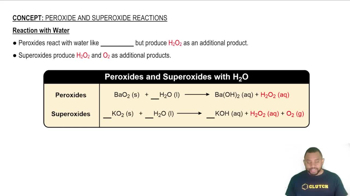Here are the essential concepts you must grasp in order to answer the question correctly.
Net Ionic Equations
A net ionic equation represents the chemical species that are involved in a reaction, excluding spectator ions. It focuses on the actual chemical change occurring in the solution. To write a net ionic equation, one must first write the balanced molecular equation, then dissociate the soluble ionic compounds into their ions, and finally eliminate the spectator ions to reveal the net ionic reaction.
Recommended video:
Acid-Base Reactions
Acid-base reactions involve the transfer of protons (H⁺ ions) between reactants. In the case of HI, a strong acid, it dissociates completely in water to produce H⁺ and I⁻ ions. For KH, a strong base, it dissociates to yield K⁺ and OH⁻ ions. Understanding these dissociations is crucial for determining the products of the reactions with water.
Recommended video:
Hydride Reactions with Water
Hydrides, such as HI and KH, react with water to form acids or bases. HI reacts with water to produce hydronium ions (H₃O⁺) and iodide ions (I⁻), while KH reacts to produce potassium ions (K⁺) and hydroxide ions (OH⁻). Recognizing the nature of these reactions helps in predicting the products and writing the corresponding net ionic equations.
Recommended video:
 Verified step by step guidance
Verified step by step guidance

